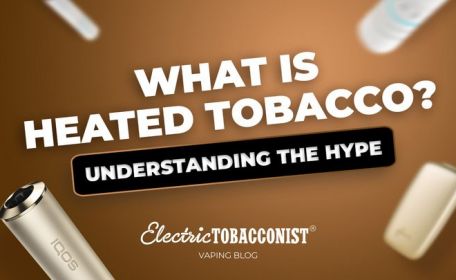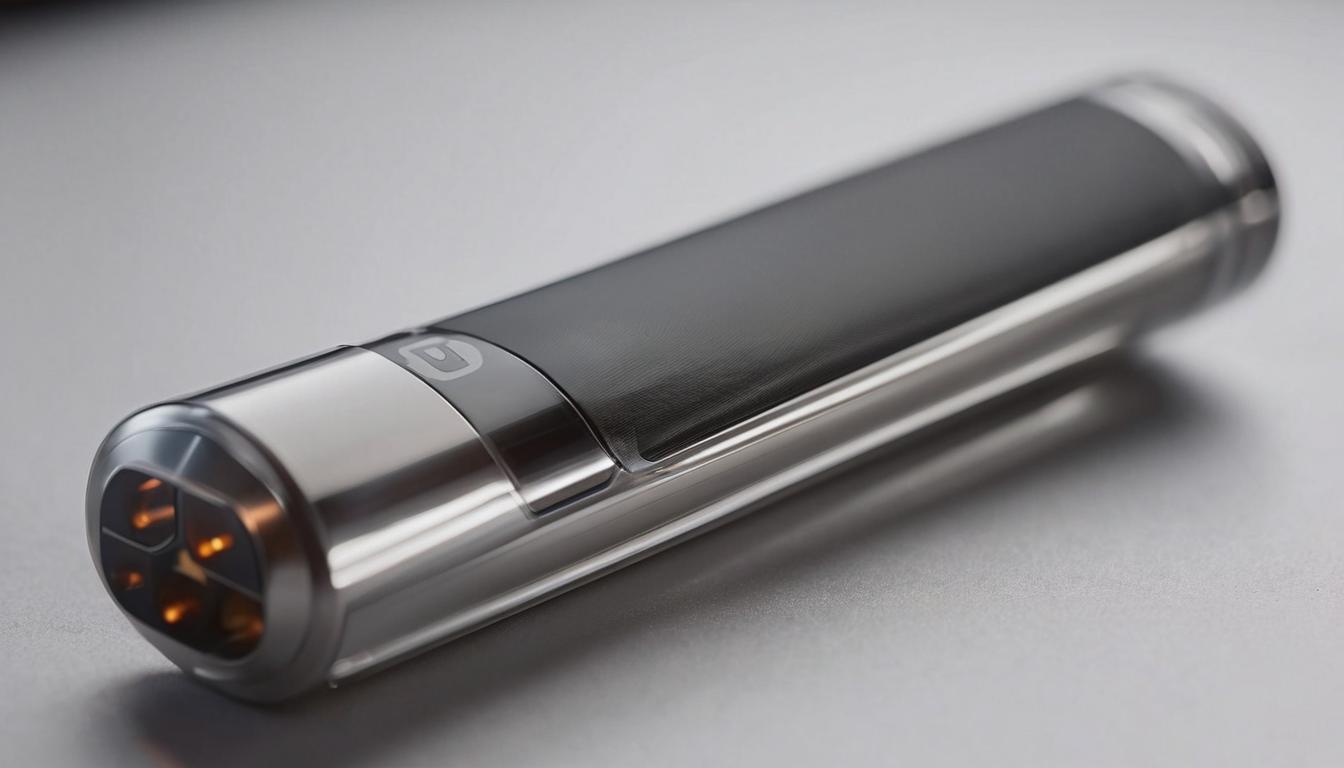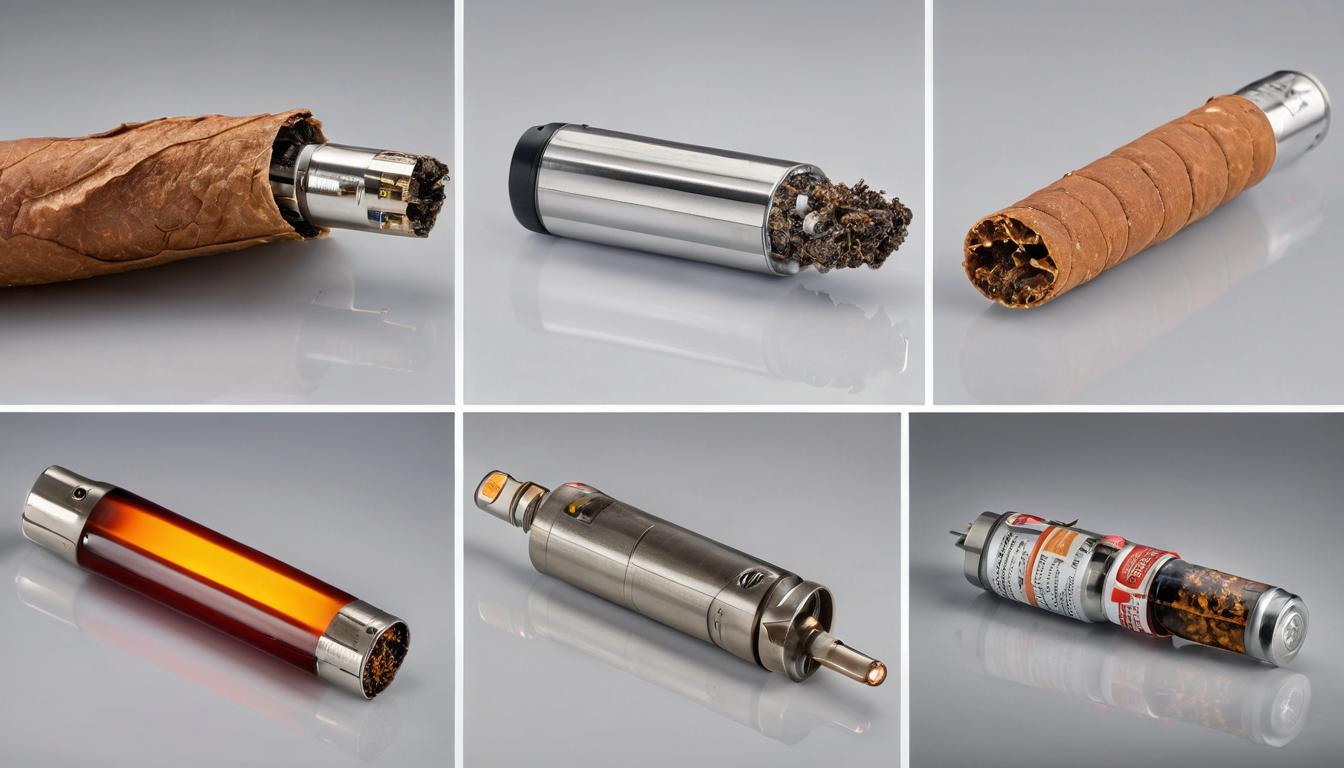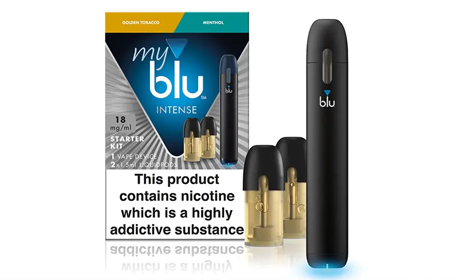All You Need to Know About Heated Tobacco: A Comprehensive Guide

All You Need to Know About Heated Tobacco: A Comprehensive Guide
Heated tobacco is a cutting-edge alternative to traditional smoking and vaping. These innovative devices warm tobacco without burning it, a significant shift from the conventional modes of enjoying nicotine. Few people know that the benefit here lies in the reduced production of harmful compounds; since there's no combustion, the quantity of toxic by-products is decidedly less. And as surprising as this may sound, some find the experience similar to traditional smoking but with an added hi-tech flair. Ready to delve deeper?
Heated tobacco products offer a potentially reduced exposure to harmful chemicals compared to traditional cigarette smoke, as they do not involve combustion. Additionally, these products may provide a familiar nicotine experience for adult smokers who are looking for alternatives to traditional cigarettes.

All You Need to Know About Heated Tobacco: A Comprehensive Guide
Heated tobacco products (HTPs) are increasingly popular as individuals seek alternatives to traditional smoking. These electronic devices heat tobacco without burning it, releasing a nicotine-containing aerosol. Unlike traditional cigarettes, HTPs produce significantly fewer and lower levels of harmful and potentially harmful constituents found in cigarette smoke.
It's critical to understand the different types of heated tobacco products available. While some use a blade to heat the tobacco enough to release nicotine and flavors without burning it, others use special tobacco sticks with an internal heating element to achieve a similar result. The design and method of heating vary among these products, impacting their overall performance and user experience.
One of the key components of heated tobacco products is the heating element, responsible for raising the temperature of the tobacco to produce the flavored aerosol. Additionally, temperature sensors are integrated into these devices to ensure that the heating process is controlled and consistent, providing users with a predictable and satisfying experience.
Heated tobacco sticks are specifically designed for heating. These processed tobacco plugs are made from ground and reconstituted tobacco leaves. Understanding the composition of these sticks sheds light on how they interact with the heating mechanism in the device, influencing the overall user experience.
Think of heated tobacco products as a revolutionary bridge between conventional smoking and vaping. They offer adult smokers the familiar sensation of smoking a cigarette, catering to characteristics that they seek in alternatives to cigarettes, such as nicotine delivery and flavor, while significantly reducing the detrimental effects associated with traditional smoking.
When scientifically substantiated and regulated, heated tobacco products provide a better alternative to smoking. Although they are not risk-free and still contain nicotine, they boast a reduction in harmful chemicals compared to traditional cigarettes by 90-95%. Nicotine levels in heated tobacco products are also 50-95% lower than those found in traditional cigarettes, making them a potentially less addictive option for smokers seeking harm reduction strategies.
| Category | Reduction Percentage |
|---|---|
| Harmful Chemicals | 90-95% |
| Nicotine Levels | 50-95% lower |
| Aerosol Particles | 90-95% lower |
| Harmful Constituents | 90-95% lower |
By understanding these aspects, you can gain valuable insights into how heated tobacco products function, their potential benefits compared to traditional options, and their implications for public health.
As we unravel the allure of heated tobacco devices, it's imperative to recognize their impact on consumer behavior and public health. Let's delve into this intricate landscape.
The Appeal of Heated Tobacco Devices
Heated tobacco devices have amassed a growing fan base due to a variety of appeals, setting them apart in the world of alternative nicotine products. One of the most significant factors contributing to their appeal is the user experience they offer. For individuals transitioning away from traditional smoking, these devices provide a familiar ritual, thereby offering a smoother shift. The crucial part here is the familiar feeling; it's like holding onto a security blanket while venturing into something new.
Additionally, the reduced odor generated by heated tobacco devices further elevates their appeal. Unlike traditional cigarettes that emit a strong and lingering smell, these devices produce a significantly milder and less pervasive scent. This reduced odor makes them more discreet and suitable for use in various settings, enhancing convenience and comfort for users. It's like having your morning coffee without having to worry about smelling like an ashtray afterward.
Furthermore, one cannot underestimate the significance of nicotine delivery in the appeal of these devices. While delivering nicotine effectively, heated tobacco devices substantially reduce exposure to harmful chemicals commonly present in traditional cigarette smoke. This presents a compelling draw for individuals who seek to maintain their nicotine habits with lesser risk to their health.
By combining these appealing attributes, heated tobacco devices establish themselves as an inviting alternative to traditional smoking. Their design caters to the needs and preferences of users while seeking to provide a satisfying experience with reduced harm compared to traditional cigarettes.
In essence, their ability to replicate certain aspects of traditional smoking, coupled with reduced odor and potentially lower exposure to harmful substances, positions heated tobacco devices as an attractive option for individuals looking to transition from conventional smoking habits.
As we shift our focus to explore the potential health implications of using heated tobacco, it's crucial to understand how these devices compare in terms of their impact on well-being.
Health Implications of Heated Tobacco Use
When it comes to heated tobacco products, there’s much discussion about whether they are safer than traditional cigarettes. Some studies suggest that heated tobacco products emit significantly fewer and lower levels of harmful and potentially harmful constituents compared to cigarette smoke. However, it's essential to approach this with caution. Research is still ongoing, and current evidence does not sufficiently determine the health risks of heated tobacco products compared to conventional cigarettes.
One significant concern is nicotine dependency. While the primary cause of smoking-related diseases is inhaling harmful chemicals from burned tobacco, it's crucial to note that heated tobacco products still contain nicotine. Nicotine is highly addictive, and continued use of heated tobacco products can lead to dependency. Therefore, even though the harmful substances found in traditional cigarette smoke may be reduced, a consideration for nicotine dependence must be made.
With an awareness of the potential health implications of heated tobacco use established, we now turn our attention to a comparative analysis between heated tobacco and traditional smoking and vaping.
Heated Tobacco vs. Traditional Smoking and Vaping
Finding a safer alternative to smoking has been a quest for many, leading to the invention of various tobacco and nicotine delivery systems. Although these alternatives serve a common goal, they differ significantly in composition, health implications, and user experience.
Traditional Smoking When we think about traditional smoking, what typically comes to mind is the combustion of tobacco, generating smoke containing harmful byproducts. This process releases thousands of chemicals, many of which are toxic and carcinogenic. It's this cocktail of hazardous substances that poses a substantial risk to the smoker's health.
Conventional cigarettes not only deliver nicotine but also expose users to tar, carbon monoxide, and formaldehyde, among numerous other harmful compounds. These substances contribute to respiratory issues, heart diseases, and various forms of cancer, making smoking a significant public health concern.
Vaping On the other hand, vaping is often perceived as a less harmful alternative to smoking. It involves heating a liquid (vape juice) to produce an aerosol that users inhale. Unlike traditional smoking, vaping doesn't involve combustion, which eliminates the production of harmful smoke. However, while it may contain fewer toxicants than cigarette smoke, vaping aerosol is not completely harmless.
The e-liquids used in vaping devices typically contain nicotine and flavorings, which may also include potentially harmful substances like diacetyl and other chemicals associated with lung diseases. While vaping is considered less harmful than smoking cigarettes due to the absence of combustion and reduced exposure to toxic chemicals, it is not without its own set of health concerns and implications.
Heated Tobacco Products In contrast, heated tobacco products (HTPs) offer an alternate approach that falls between traditional smoking and vaping. These devices heat tobacco without burning it to release a nicotine-containing aerosol. This method reduces the number and levels of harmful constituents compared to cigarette smoke. Also, unlike some vape liquids that contain a wide range of flavors and additives, heated tobacco sticks primarily consist of ground and reconstituted tobacco leaves.
The key point here is that heated tobacco products are distinct from both traditional cigarettes and vaping devices in terms of their composition and mode of use. The reduction in harmful chemicals emitted by HTPs addresses a critical concern related to conventional smoking, making them a potential contender in harm reduction strategies.
Nicotine Delivery It's important to note that nicotine is not the main cause of smoking-related diseases; they are primarily caused by inhaling high levels of harmful chemicals formed when tobacco is burned.
In heated tobacco products, nicotine is delivered more rapidly than traditional cigarettes but less rapidly than vaping devices. This controlled release offers adult smokers an alternative source of nicotine while significantly reducing exposure to harmful chemicals found in cigarette smoke.
Understanding the differences between traditional smoking, vaping, and heated tobacco products allows us to evaluate their relative impact on public health and make informed choices regarding harm reduction strategies.
Research and Regulations on Heated Tobacco Devices

Ongoing research plays a vital role in uncovering the potential benefits and risks associated with heated tobacco products. Scientific studies are crucial in shaping and informing regulatory decision-making processes. These studies focus on several aspects, including the composition, effects on human health, and overall impact on public health. Regulatory bodies develop evidence-based policies that prioritize consumer safety while considering potential public health implications.
Scientific studies often assess the chemical composition of heated tobacco products, particularly the substances released during the heating process and their potential health effects. Researchers analyze emissions produced by these devices to identify any harmful substances and compare them with traditional cigarette smoke. This comparative analysis provides valuable insights into the relative risks associated with heated tobacco use, contributing to informed regulatory decisions.
Regulatory Landscape and Safety Assessment
Regulatory authorities play a pivotal role in evaluating the safety and potential impact of heated tobacco products on public health. The comprehensive assessment of these products takes into account product design, emissions, user behavior, and long-term health outcomes. This multifaceted approach allows regulatory bodies to create standards that ensure product safety while mitigating potential risks to consumers.
Moreover, these assessments often involve rigorous testing methodologies to evaluate product performance and emissions under various usage scenarios. Standardized protocols may be employed to measure nicotine delivery, toxicant emissions, and device functionality. By subjecting heated tobacco products to robust testing protocols, regulatory authorities can effectively gauge their safety profile and make informed decisions regarding market authorization and distribution.
In recent years, several countries have implemented specific regulations governing the sale, marketing, and use of heated tobacco products. These regulations include provisions related to age restrictions, product labeling requirements, advertising limitations, and packaging standards. By establishing clear guidelines for manufacturers and retailers, regulatory frameworks contribute to promoting responsible product stewardship and consumer awareness.
While some advocate for stringent regulations to address potential health concerns associated with heated tobacco products, others emphasize balanced policies that consider harm reduction principles and consumer choice. This ongoing debate underscores the complexity of regulatory decision-making in the context of emerging tobacco technologies.
As researchers continue to uncover new insights through scientific studies and regulatory bodies refine their oversight of heated tobacco products, a dynamic landscape is shaping the future trajectory of these devices within the global market.
Breakdown of Popular Heated Tobacco Devices

Let's delve into some of the most popular heated tobacco devices currently available on the market. Each device is equipped with unique features, design elements, and functionalities crafted to enhance the user experience.
Leading Brands and Models
One of the prominent brands in the heated tobacco industry is IQOS by Philip Morris International. Its flagship device, IQOS 3 DUO, is renowned for its sleek design, rapid charging capabilities, and extended battery life. Users have praised its smooth draw and consistent heat delivery, providing a satisfying tobacco flavor through its HEETS and TEREA ranges without combustion. Additionally, the IQOS Iluma offers versatility with its ability to enjoy multiple uses without recharging.
Another significant contender in the market is glo from British American Tobacco. The glo device features a slim and ergonomic design that fits comfortably in hand. Its heating chamber technology allows for even heat distribution, resulting in a balanced and rich tobacco flavor. Users have commended the glo device for its simple operation and long-lasting battery life, making it an appealing option for those new to heated tobacco products.
Features and User Experience
In considering these devices, it's important to note that they all operate with specially designed tobacco sticks that need to be inserted into the device before use. This method aims to provide a smoke-free and ash-free experience while still delivering the flavor and ritual associated with traditional smoking.
Each device utilizes sophisticated heating technology to reach an optimal temperature that releases nicotine and flavor from the tobacco sticks without burning them. This innovative approach focuses on reducing harmful chemicals associated with combustion while still offering users a familiar sensation.
Benefits of Heated Tobacco Devices
The shift towards heated tobacco devices stems from a desire for reduced exposure to harmful chemicals found in cigarette smoke. By eliminating the combustion process, users may experience a potential reduction in exposure to toxicants and harmful by-products commonly associated with traditional smoking. Additionally, many users appreciate the option to indulge in tobacco without causing discomfort to those around them due to second-hand smoke.
Heated tobacco devices also offer convenience through their portable nature and quick heating times, allowing users to enjoy their desired experience without extensive preparation or lingering odors.
As we explore the diverse landscape of popular heated tobacco devices, it's evident that advancements in technology have paved the way for innovative alternatives to traditional smoking, providing users with an array of options designed to deliver a more controlled and potentially reduced-risk experience.
In conclusion, understanding the landscape of heated tobacco devices empowers consumers to make informed choices about their smoking habits, catering to both their enjoyment and well-being.










